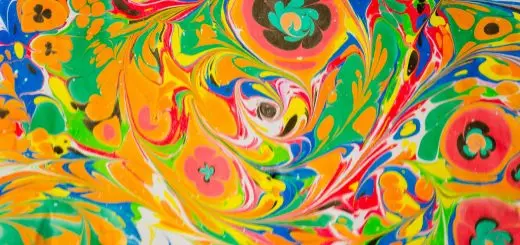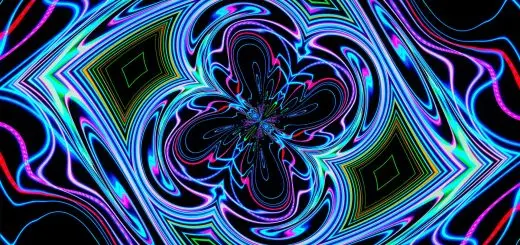Japanese Mythology: Kami, Yokai, and Shinto Spirits

Looking for more amazing products? Check out our online store and explore our collection here! Happy shopping!
Before diving in, please note: This post is for informational purposes only. If you’d like to know more about how we approach topics, feel free to check out our friendly Disclaimer Page.
Hey there, amazing readers! 
We’re committed to delivering quality posts, and your support (even just sticking around despite the ads) means everything to us. So, bear with us, and thanks for helping us keep the good vibes rolling. Now, on to the fun stuff!
TRANSLATE BUTTON AT THE END OF THE ARTICLE
Exploring Japanese Mythology
Japanese mythology is a rich tapestry of beliefs, legends, and spiritual practices that have been passed down through generations.
These tales often revolve around the supernatural realm, inhabited by a diverse array of beings such as kami, yokai, and Shinto spirits.
Each of these entities plays a unique role in Japanese folklore and has a significant impact on the daily lives of the people.
The Concept of Kami in Japanese Religion
Kami, often translated as "gods" or "spirits," are revered in Japanese Shinto religion as divine beings that embody the natural world.
They are believed to exist in everything around us, from the trees and rocks to the wind and water.
Kami are thought to influence human affairs and can bring blessings or misfortune depending on how they are treated.
In Shintoism, there is no strict hierarchy of kami, and each one is considered worthy of respect.
Yokai: Supernatural Creatures in Japanese Folklore
Yokai are supernatural creatures in Japanese folklore that can range from mischievous spirits to malevolent demons.
These entities often have a connection to the natural world and are believed to inhabit specific locations or objects.
Yokai stories have been passed down for centuries, with each tale adding to the rich tapestry of Japanese myth.
Some yokai are depicted as protectors, while others are seen as tricksters who delight in causing chaos.
Shinto Spirits: Guardians of the Natural World
Shinto spirits, known as kami-no-kami, are revered as the guardians of the natural world in Japanese tradition.
These spirits are believed to reside in sacred places such as mountains, rivers, and forests.
People often visit Shinto shrines to pay their respects to these spirits and seek their blessings.
Shinto spirits play a vital role in maintaining the harmony between humans and nature, emphasizing the interconnectedness of all living things.
Origins and Characteristics of Kami
Kami are deeply rooted in Japanese culture and are believed to have originated from the ancient indigenous beliefs of the Japanese people.
These divine beings are characterized by their benevolence, wisdom, and power.
Kami can manifest in various forms, from animals to natural phenomena, and are often associated with specific virtues or aspects of life.
The concept of kami underpins many aspects of Japanese society, influencing everything from art and architecture to festivals and rituals.
Types of Yokai in Japanese Mythology
Yokai come in a wide variety of forms, each with its own unique characteristics and abilities.
Some of the most common types of yokai include:
Kitsune: Fox spirits known for their shape-shifting abilities.
Tengu: Bird-like creatures with supernatural powers.
Oni: Demonic beings often depicted as ogres or trolls.
Yuki-onna: The snow woman, a ghostly figure associated with winter.
These yokai and many others populate Japanese folklore, adding intrigue and mystery to the stories passed down through generations.
Rituals and Offerings to Kami
Rituals and offerings are an essential part of worshiping kami in Japanese Shinto tradition.
People often visit shrines to make offerings of food, sake, or prayers to the kami in the hopes of receiving blessings in return.
Ritual purification rites, such as washing hands before entering a shrine, are also common practices to show respect to the kami.
These rituals serve to honor the kami and maintain a harmonious relationship between humans and the divine.
Famous Shinto Spirits in Japanese Culture
Some of the most famous Shinto spirits in Japanese culture include:
Amaterasu: The sun goddess, who is considered the ancestor of the imperial family.
Inari: The deity of rice and agriculture, often depicted as a fox.
Susanoo: The storm god, known for his fierce and impulsive nature.
Hachiman: The god of war and divine protector of Japan.
These Shinto spirits are revered for their power and influence in various aspects of Japanese life, from agriculture to protection in times of war.
Folktales and Legends of Yokai
Yokai have been the subject of countless folktales and legends in Japanese mythology.
These stories often depict yokai as mysterious and otherworldly beings that interact with humans in unexpected ways.
From tales of shape-shifting fox spirits to mischievous water imps, yokai stories capture the imagination and spark curiosity about the supernatural world.
Many of these folktales have been passed down through oral tradition and continue to be a source of fascination for people of all ages.
The Influence of Shinto Spirits in Everyday Life
Shinto spirits have a profound influence on everyday life in Japan, shaping everything from religious practices to cultural traditions.
People often seek the guidance and blessings of Shinto spirits during important life events, such as weddings, births, and funerals.
Shrines dedicated to specific kami are scattered throughout the country, serving as places of worship and reflection for both individuals and communities.
The presence of Shinto spirits in daily life reinforces the idea of interconnectedness with the natural world and the importance of maintaining harmony with the divine.
Interactions Between Humans and Yokai
Interactions between humans and yokai are a common theme in Japanese folklore, often illustrating the complex relationship between the two worlds.
While some yokai are benevolent and helpful to humans, others are mischievous or malevolent, causing trouble and chaos.
Stories of humans forming alliances with yokai or outwitting them through clever means are prevalent in Japanese mythology, highlighting the dynamic between the mortal and supernatural realms.
These tales serve as cautionary lessons, teaching respect for the unseen forces that govern the world.
Modern Interpretations of Japanese Mythology
In modern times, Japanese mythology continues to capture the imagination of people around the world, inspiring art, literature, and popular culture.
From manga and anime to video games and films, the stories of kami, yokai, and Shinto spirits have found new life in contemporary media.
Artists and creators draw on traditional myths and legends to create new interpretations that resonate with audiences today.
The enduring appeal of Japanese mythology speaks to its timeless themes of nature, spirituality, and the supernatural, ensuring that these tales will continue to captivate audiences for generations to come.
Conclusion
Japanese mythology is a rich and intricate tapestry of beliefs and legends that have shaped the cultural landscape of Japan for centuries.
From the divine kami to the mischievous yokai and the revered Shinto spirits, these entities play a vital role in the spiritual and cultural life of the Japanese people.
The stories and traditions surrounding these supernatural beings provide insight into the values and beliefs of Japanese society, emphasizing the interconnectedness of humans, nature, and the divine.
As these myths continue to evolve and inspire new generations, they remind us of the enduring power of storytelling and the enduring legacy of Japanese folklore.

The Enlightenment Journey is a remarkable collection of writings authored by a distinguished group of experts in the fields of spirituality, new age, and esoteric knowledge.
This anthology features a diverse assembly of well-experienced authors who bring their profound insights and credible perspectives to the forefront.
Each contributor possesses a wealth of knowledge and wisdom, making them authorities in their respective domains.
Together, they offer readers a transformative journey into the realms of spiritual growth, self-discovery, and esoteric enlightenment.
The Enlightenment Journey is a testament to the collective expertise of these luminaries, providing readers with a rich tapestry of ideas and information to illuminate their spiritual path.
Our Diverse Expertise
While our primary focus is on spirituality and esotericism, we are equally passionate about exploring a wide range of other topics and niches 

To ensure we provide the most accurate and valuable insights, we collaborate with trusted experts in their respective domains 
Our blog originally focused on spirituality and metaphysics, but we’ve since expanded to cover a wide range of niches. Don’t worry—we continue to publish a lot of articles on spirituality! Frequently visit our blog to explore our diverse content and stay tuned for more insightful reads.
Hey there, amazing reader! 
Check out our store here and take a peek at some of our featured products below! Thanks for being awesome!












